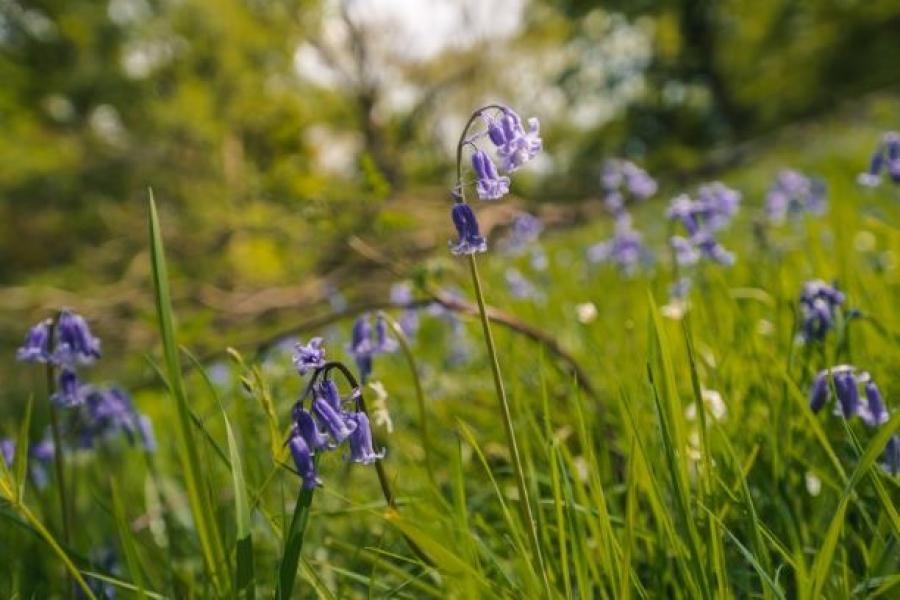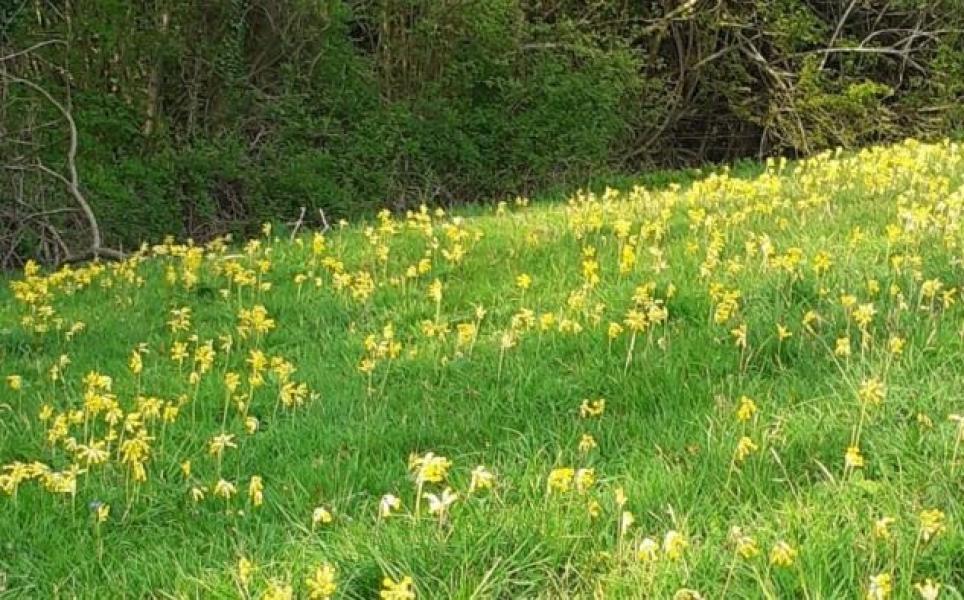Spotter's Guide - Spring Wildflowers
Colourful wildflowers carpeting the Forest floor are one of the most uplifting sights in spring. Here are our top 10 flowers to look out for on Forest visits this season.
Dog violets - loved by rare butterflies like the silver washed fritillary and the Ancient Greeks who believed they were a sign of fertility and romance - can be found in a range of habitats in the Forest from woodland to grassland. Also called wood violet, their unscented purple flowers, with heart-shaped leaves, appear from April to June.
The beautiful bluebell flowers mid-April to late-May (depending on weather conditions) and thrives in broadleaf woodland. Their presence can indicate ancient woodland which is woodland that has existed continuously since at least 1600 AD. Since the introduction of Spanish bluebells in Victorian times, they have been a protected species - it is illegal to uproot them from land on which they naturally grow!

The distinctive scent of wild garlic fills areas of the Forest from April time - look out for their long, pointed leaves that grow from the bulb at the plant base in March, and their white, clustered flowers that bud from April to June. Like bluebells, the presence of wild garlic is an ancient woodland indicator. As well as being an early source of nectar for bees and other pollinators, it is also popular with foragers and can be eaten raw or cooked.

In May you might see pretty, yellow cowslips (meaning cow pat) which is spread by side stems called rhizomes. The whole area becomes covered with flowers if there is not overgrazing and are great places for butterfly spotting. They prefer calcareous soil and are closely related to the primrose, but the flowers are more tube-like and hang downwards. In the past, the flowers were made into a tea and the dried rhizome was used as a medicine for bronchitis - too much is poisonous though!

The primrose can be seen in flower across woodland and grassland habitats from March until May. The flowers have five notched petals that can vary from pale to deep yellow with a darker yellow/orange centre. Their leaves form rosettes and are wrinkled with a hairy underside. In folklore planting hanging Primroses within your doorway was considered an invitation to fairies. Keep an eye out for them throughout our older woodland sites in the Forest.

Lesser celandine is one of the first signs of spring! It flowers from February to May which is thought to coincide with the reappearance of swallows! This plant favours damp woodlands, meadows and the banks of canals or streams. Its beautiful shiny yellow flowers can have between 8 – 12 petals and its leaves form dark green heart shapes. Did you know the word celandine comes from the Greek word meaning swallow?

Hawthorn - also known as the May tree as this is the month in which it flowers - adds swathes of cherry-like white and pale pink flowers to the hedgerows in the Forest. It is a member of the rose family and can support up to 300 species of insects which feed on its leaves, blossom, and single seeded red fruit (haws) in the autumn. It is known as a symbol of fertility and, in Ireland, as a fairy tree that is very bad luck to chop down.

Flowering from April to June, the Cuckooflower – also known as Lady’s smock – is found in many of the Forest’s damper grassland areas. Its 4 petal flowers are atop an upright stem and vary from pale to deep lilac and are rarely pure white. Cuckooflower is most commonly associated with the return of migrating Cuckoos, but did you know that it is also an important food plant for the caterpillars of the orange tip butterfly?

Flowering April to May, this delicate wildflower favours damp, shady woodlands including conifer plantations. Wood sorrel flowers have five white petals and are veined lilac/purple, its leaves are trefoil shaped and a vibrant green. Though nationally common this wildflower is locally scarce and is an ancient woodland indicator. Interestingly, Wood sorrel leaves will fold back before/during rain and as it gets dark.

Blackthorn flowers in March and April before it forms leaves and is commonly found in hedgerows throughout the forest. It is a thorny shrubby tree and grows very densely. When not in flower it can be confused with Hawthorn however, Blackthorn thorns are much larger and its leaves are finely toothed small ovals. In folklore it is said that Blackthorn has magical properties and was used to make witches wands!




